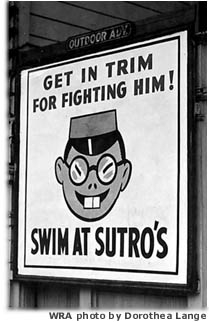|
The greatest forced migration in American history was getting under way today.
Along the entire Pacific Coast, and from the southern half of Arizona, some 120,000 enemy aliens and American-
Before deadlines are set for clearing of the area— Thomas C. Clark, alien control co-ordinator, said in Los Angeles he hoped Japanese might be removed from coast prohibited areas within 60 days, but that “we are not going to push them around.” “We are going to give these people a fair chance to dispose of their properties at proper prices,” Mr. Clark said. “It has come to our attention that many Japanese farmers have been stampeded into selling their properties for little or nothing.”
Sixty-
Mike Masaoka, national field secretary of the league, said its members “realize that it was the necessity of military expediency which forced the Army to order the eventual evacuation of all Japanese,” and that he “assumed” the classification of Americans of Japanese lineage “in the same category as enemy aliens was impelled by the motives of military necessity and that no racial discrimination was implied.”
Among those who must move, after the Army swings into its plan for progressive clearing of the 2000-
General DeWitt gave no indication when the first deadline for Japanese in the coastal area would be set. There was continued action, however, against “Class 1” persons listed in General DeWitt’s announcement of the military area. This class includes persons definitely suspected of sabotage and espionage, of which several thousand already have been taken into custody by the FBI on presidential warrants accusing them of being potentially dangerous aliens.
Among the most important arrests during the past 24 hours was that of George Nakamura, an alien Japanese living close to the Santa Cruz shoreline. In his possession FBI agents and police said they found 69 crates of powerful fireworks of the signal type— The San Francisco News March 4, 1942 Go to the Japanese Internment page.
|
 None of the Japanese had actual orders to get out of the coastal military area designated yesterday by Lieut. Gen. John L. DeWitt, Western defense and Fourth Army commander, but all had his warning that eventually they must go.
None of the Japanese had actual orders to get out of the coastal military area designated yesterday by Lieut. Gen. John L. DeWitt, Western defense and Fourth Army commander, but all had his warning that eventually they must go.